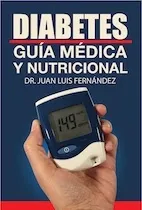What are hormones?
Definition
Hormones are substances that are poured directly to the blood, and through it they reach all cells.They act as chemical messengers that regulate specific functions of the cells and tissues of the body.
But they only act in certain cells, called target or white .Two hormones that affect almost all cells are thyroxine (thyroid hormone) and growth hormone, which help in the growth and development of cells and tissues.
My eBook on Diabetes
Classification
Due to their chemical structure, hormones can be of three types:
1.Proteins
2. Lipids
3. Amino acid derived
Proteins
Most hormones are proteins.When they have less than 100 amino acids they are called peptides, such as insulin, which has 51 amino acids.Proteins are composed of amino acids.
Proteins are hydrosoluble, so they can travel freely in the blood and quickly reach target cells.
In the same way, the duration of its effect is short.Examples of protein hormones are insulin, glucagon and hypoophysis hormones (pituitary).
lipids
Steroid hormones are formed from the cholesterol molecule, so they have certain characteristics common to lipids.For example, they are insoluble in water, so they need transporters to circulate through the bloodstream and reach their target cells.
transporters are proteins, similar to lipoproteins.Examples of steroid hormones are cortisol and sex hormones (testosterone, estrogens, progesterone).
amino acids derived
In this category we have thyroxine and adrenaline.
The thyroxine helps control the speed of chemical reactions that occur in our body.It also circulates transported by protein.
The adrenaline is secreted by the adrenal gland in response to a nerve impulse.This occurs in external alarm situations, which prepares us to face a threat.It is the classic reaction of "fighting or fleeing."
Hormonal secretion control
negative feedback
hormones are capable of self -regulating .When excessive amounts of a hormone are produced, this serves as a brake on the additional production of more hormones.It is what is known as negative feedback.
The stimulus to stop the production of a hormone is also exerted for its effects.For example, the insulin makes blood glucose decrease.When glucose lows too much, the production of more insulin is slowed.
Homeostasis
Homeostasis is a property of living beings that consists in maintaining the balance of the internal physiological variables.The endocrine system, through hormones, helps maintain homeostasis.Examples are the balance of blood glucose levels, blood pressure and the speed of metabolic activities.
When homeostasis fails, diseases occur.
Hormonal receptors
Hormonal receptors are molecules to which hormones are coupled to make their effect.Receptors are specific for each type of hormone.This makes a hormone act on one type of cells, and not on another.
For example, thyroid stimulating hormone (TSH), produced by the pituitaryproduce thyroxine.But it has no activity about any other fabric.This is because its receptors only exist in the thyroid gland.
For its location, there are two types of receptors:
1.Membrane receptors
2. Intracellular receptors
Membrane receptors
Protein hormones have their receptors in the cell membrane.For example, insulin, since it cannot cross the membrane (see image).
The cell membrane is composed of two layers of phospholipids and one of cholesterol (both lipids).
© Alila, 123rf
When a hormone attaches to its cell receiver, it is activated and induced to a series of chemical reactions within the cells that produce a certain physiological effect.In the case of insulin is to activate glucose transporters, which have glucose from the blood to the inside of the cell.
Most cases of type 2 diabetes are produced by defective insulin receptors.
Intracellular receptors
Intracellular receptors are in the cytoplasm or cell core.To them belong the receptors of the steroid hormones and those derived from amino acids.Steroid hormones can easily cross cell membrane, as they are of lipid origin.




